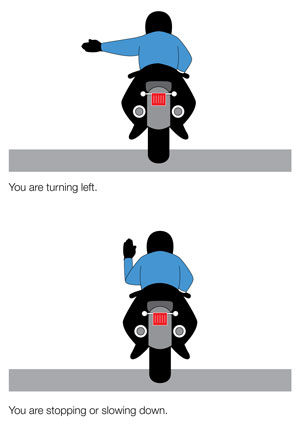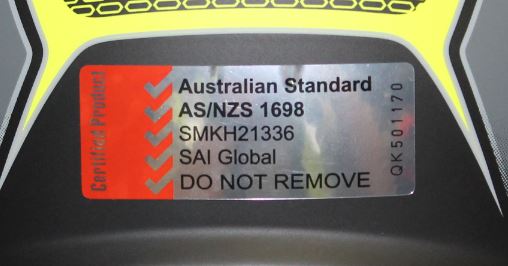The Rider's Handbook
Road rules for motorcycle riders

Motorcycle riders must hold a current motorcycle licence and the motorcycle must have current registration.
Riders must adhere to the same road rules as cars, trucks and other motor vehicles, as described in The Driver’s Handbook. In addition, there are several rules that apply specifically to motorcycle riders.
When riding
The motorcycle rider must:
- sit astride the rider’s seat facing forward
- wear a correctly fitted and securely fastened approved motorcycle helmet
- keep at least one hand on the handlebars keep both feet on the foot pegs designed for rider use.
Helmets
Motorcycle and motor trike riders and their passengers (including sidecar passengers) in South Australia must wear an approved motorcycle helmet that meets either the Australian Standard (AS 1698-1988 and AS/NZS 1698:2006) or European (ECE 22.05 and ECE 22.06) standard motorcycle helmet and is in good repair and proper working order and condition. The helmet must be properly fitted and securely fastened and must be marked with an official standards mark certifying compliance with the relevant standard.
Motorcycle riders must refer to the instructions for their particular make and model of helmet to determine the suitability for attachments.
![]()
Keeping left
Generally, vehicles travelling on a single lane road must drive as near as practicable to the far left side of the road. However, due to the importance of lane positioning for motorcycle rider safety, this rule does not apply to motorcycles. Motorcycle riders can legally travel in any part of the lane.
Hand signals
Motorcycle riders can use hand signals for stopping, slowing or turning. Hand signals can improve rider safety when bright light conditions make it difficult for the motorcycle’s brake and indicator lights to be seen.
- To signal for stopping or slowing, extend either arm horizontally and bent at a right angle with a flat palm.
- To signal for turning, extend a straight arm with flat palm pointing in the direction of the turn.

Carrying Passengers
Passengers carried on a moving motor trike or motorcycle (not in a sidecar) must:
- sit astride the motorcycle pillion seat facing forward.
- keep both feet on the footrests for use by the pillion passenger.
- wear a correctly fitted and securely fastened approved motorcycle helmet.
- be eight years of age or older.
- not interfere with the rider’s control of the motorcycle or distract the rider.
The motorcycle rider must not ride with more than one passenger (excluding sidecar passengers) on the motorcycle.
Learner riders must not carry a passenger either as a pillion or in a side car. This includes a person acting as a Qualified Supervising Driver.
Passengers carried in a sidecar must:
- wear a correctly fitted and securely fastened approved motorcycle helmet.
- remain seated.
The motorcycle rider must not ride with more passengers than the sidecar is designed and approved to carry.
Children under eight are allowed to travel in a sidecar.
Carrying loads
Motorcycles and motor trikes are not designed to carry large loads. Consult your motorcycle manual to find out the total weight your vehicle is designed to carry, including rider and pillion.
Use a combination of panniers or saddlebags, tank bags and seat bags to balance the weight of your load. Keep the load:
- Low – Ideally with the use of panniers or on the seat. If a load is too high it may unbalance your motorcycle. Avoid carrying heavy or unwieldy loads on your back.
- Forward – Place your load above or in front of the rear axle as anything behind the rear axle can potentially have a serious effect on motorcycle handling.
- Balanced – Fill panniers evenly or strap heavier loads onto the seat.
- Secure – Pack the load as above or strap it carefully to the motorcycle. A loose load or strap could catch in the rear wheel or chain and cause a crash. Extreme care should be taken when using straps equipped with hooks as they are a major cause of eye loss.
The width of your loaded motorcycle must not exceed one metre maximum. Nothing in the load should project out from the motorcycle in a way that is likely to injure pedestrians, or to obstruct or damage another vehicle (or anything else, including the road surface).
Towing and being towed
When a motorcycle is being towed by another vehicle using a towline (chain, rope, fabric, strap or wire), the distance between the two vehicles must not exceed 2.5 metres.
When the towline is longer than 2 metres, you must attach a white or brightly coloured flag, piece of cloth or other similar material to the line as a warning.
Learner riders must not tow a trailer.

































